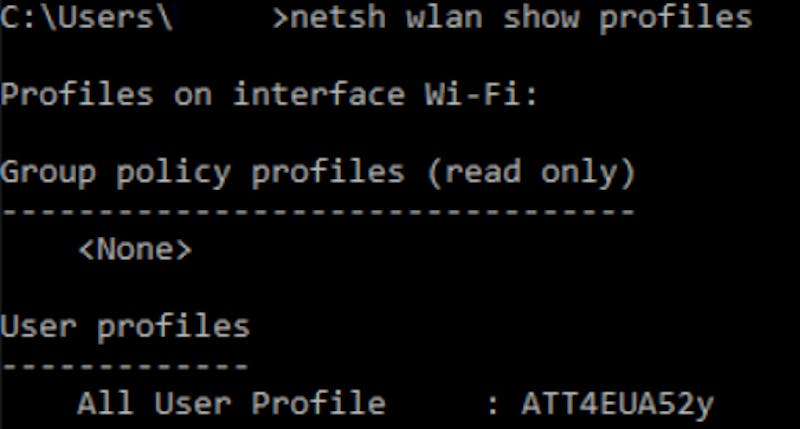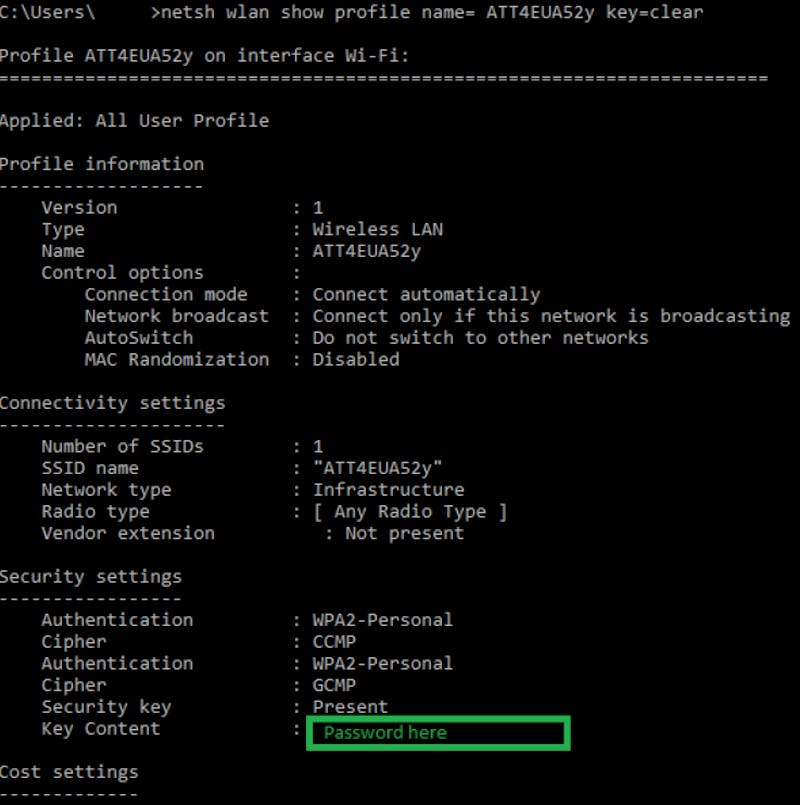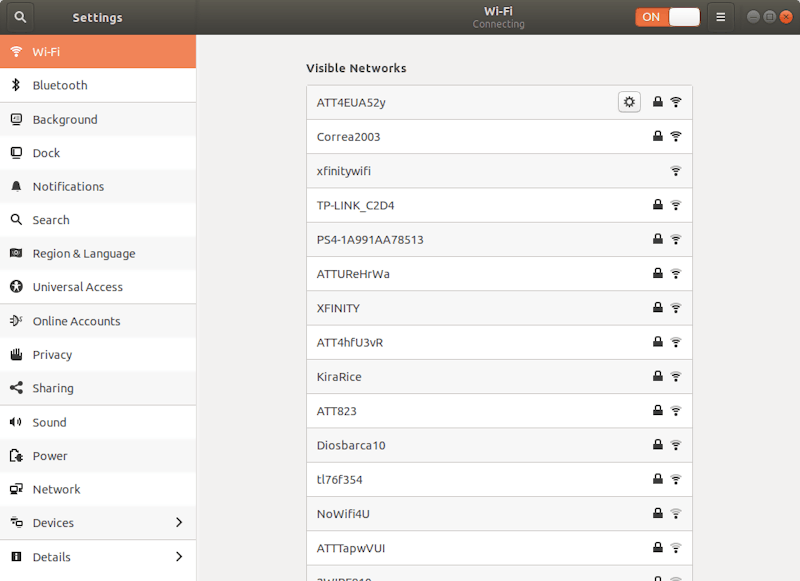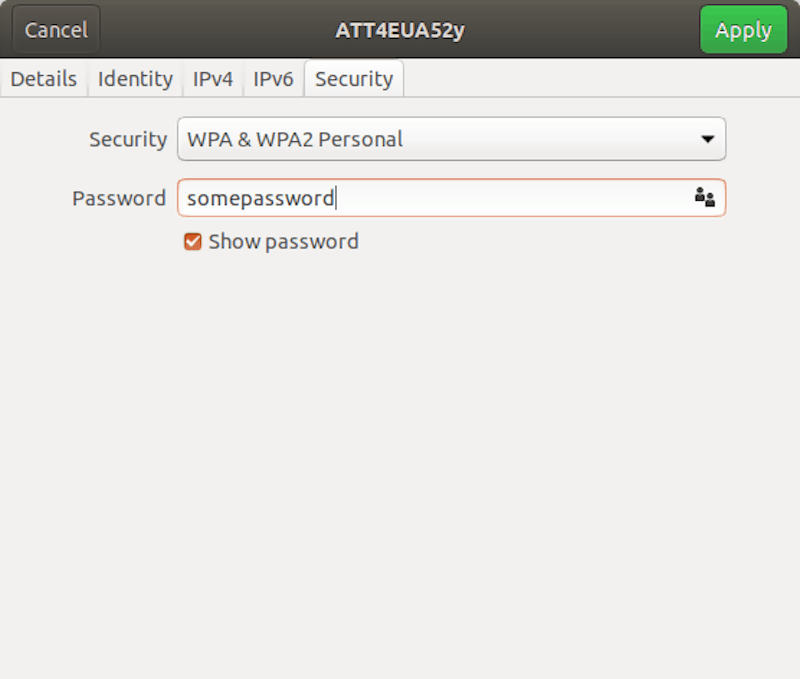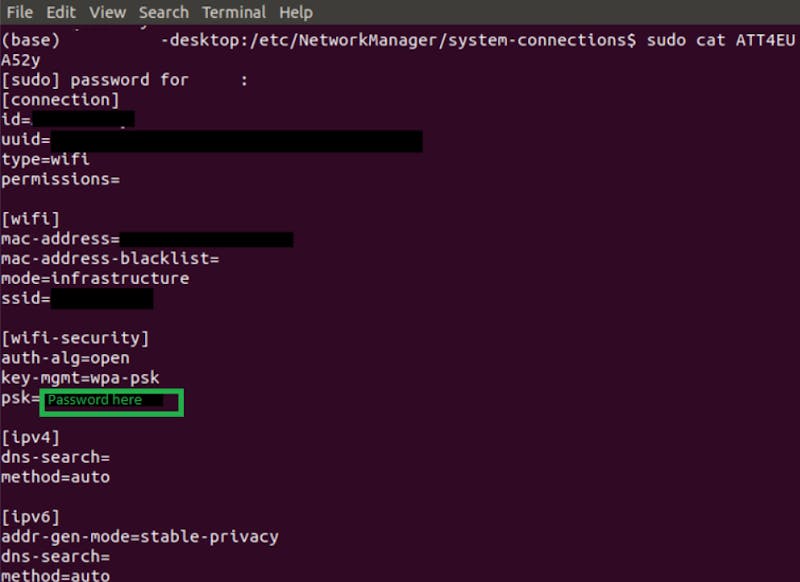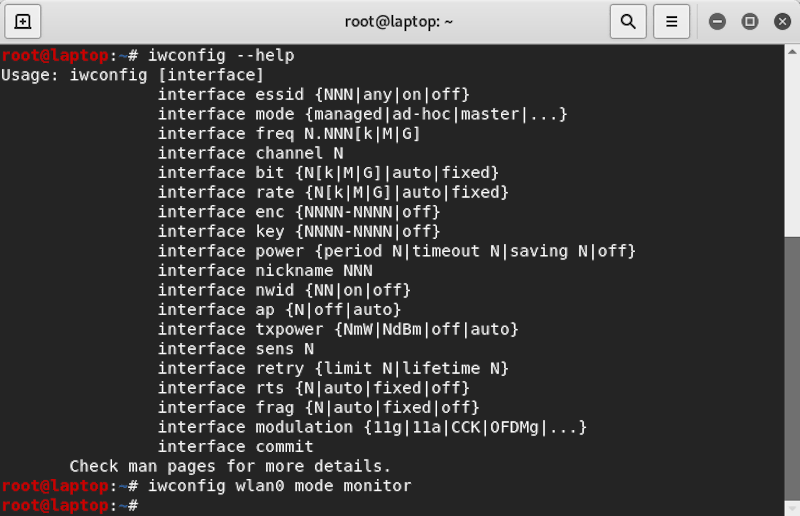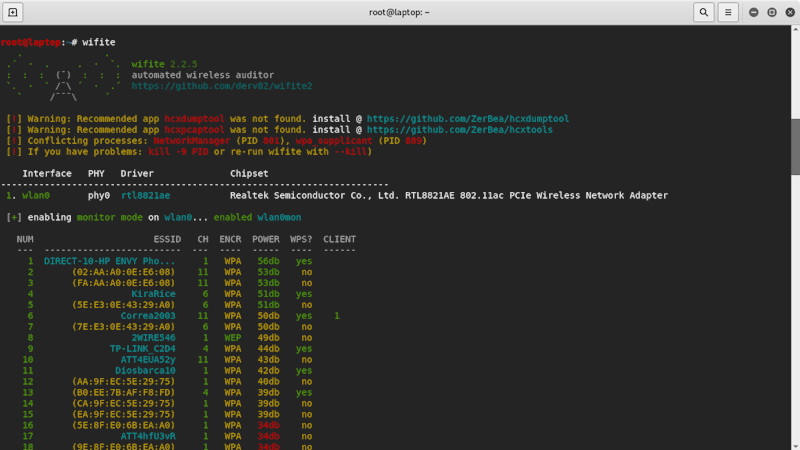How To Find Your Saved Wifi Password
The Internet is an important part of our everyday lives. With all the devices we tend to accumulate, the most common convenient way we achieve connectivity is through WiFi. With all these devices, logins, and WiFi hotspots we connect to, it can be hard to keep track of it all.
Have you ever felt like sharing the WiFi password but don’t have access or don’t want to bother with going all the way to the router? Want to see all the passwords you’ve entered in the past, for access points you still are able to connect to? For whatever reason lost or changed the WiFi password, and need a way to recover it from a device that is still able to connect? Too shy to ask the barista for the WiFi password once again? Luckily there’s a way!
Here I’ll show you how to see WiFi passwords across a variety of systems including routers, Windows PCs, and Android smartphones. As a bonus for advanced users, we’ll review how to find WiFi password using Wifite.
Start at the Source: Get your WiFi password from your router
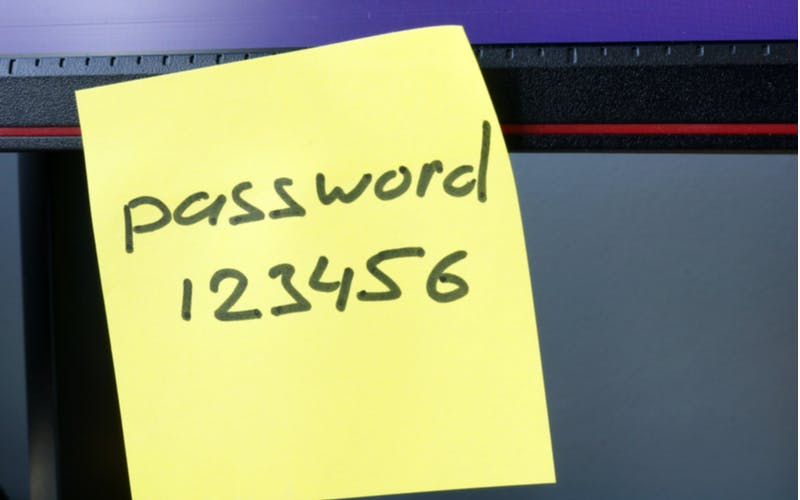
However difficult it might be to stand up and go the router or wireless access point, the easiest way how to get WiFi password is still just going straight to the source. Many SOHO (small office home office) routers have a default WiFi password stuck on some sort of sticker, or printed into the surface on one of their sides. If that password has changed, you can do a hard reset and have the original credentials restored.
For many routers, you can visit an IP or similar address, and configure or view what the password is. If you don’t know the defaults, a simple internet search of the model name can give you default login information.
How to find WiFi password on Windows
For Windows, the easiest way to show the WiFi password is by pressing the Windows key, and then typing in “View Network Connections”. In the window that opens you would then right click on the WiFi network you’d like, and select Status.
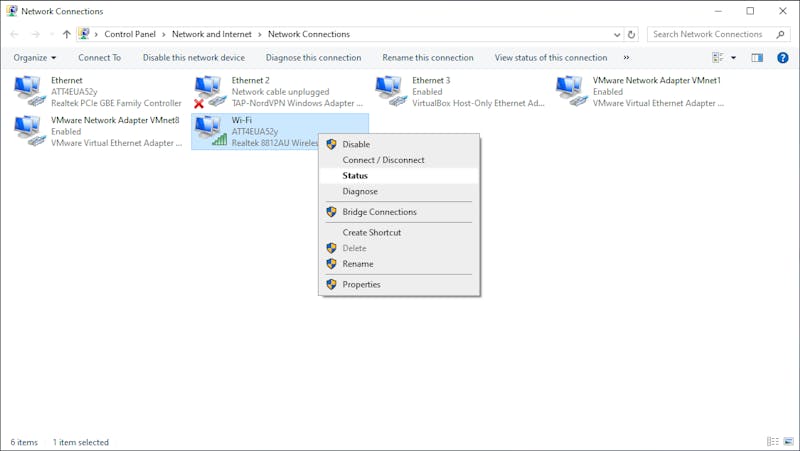
Once there, click on Wireless Properties, and once the next pop up window opens, click Security. Now check off “show characters”, and the WiFi password will now be visible.
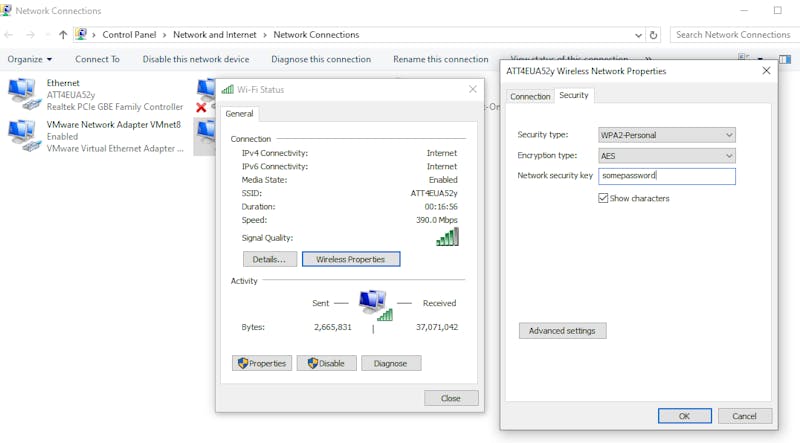
If you feel like working from the command line, you would instead take advantage of the netsh utility. First, launch a Windows command prompt, and use the command:
netsh wlan show profiles
netsh wlan show profile name= WiFiNetworkName key=clear
How to know WiFi password for Linux
Linux distributions are many and varied, so we will focus on the common Debian-based Ubuntu. The fastest way to get the WiFi password here is to have the GUI show us. In Ubuntu you’ll see this in WiFi Settings. You can find this by clicking on the top right of the screen, on the connections icon.
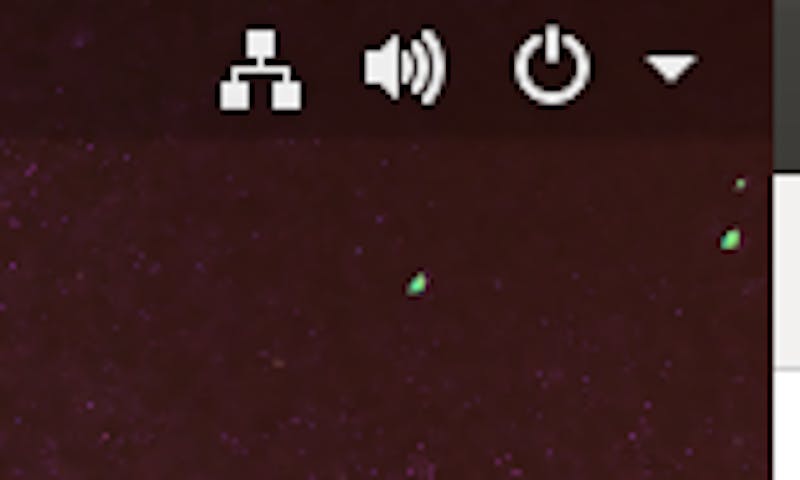
When the Settings menu comes up, click on WiFi, and select the network you want, clicking on the gear icon for it.
If you want to get fancier, you’ll have to go to the command line interface (CLI), by opening up a terminal. CTRL+ALT+T or searching for “terminal” with the super key should get you there. You’ll start at the home directory (you can go here with “cd ~”), and use “cd ..” to climb directories, pressing “ls” after, until you reach the directory with the etc directory.

Pro Tip
Pressing a partial command and then TAB will autocomplete many commands.
Now type “cd etc” and “ls” once there, and look for the network directory which should show the WiFi password. In Ubuntu, it will be NetworkManager.
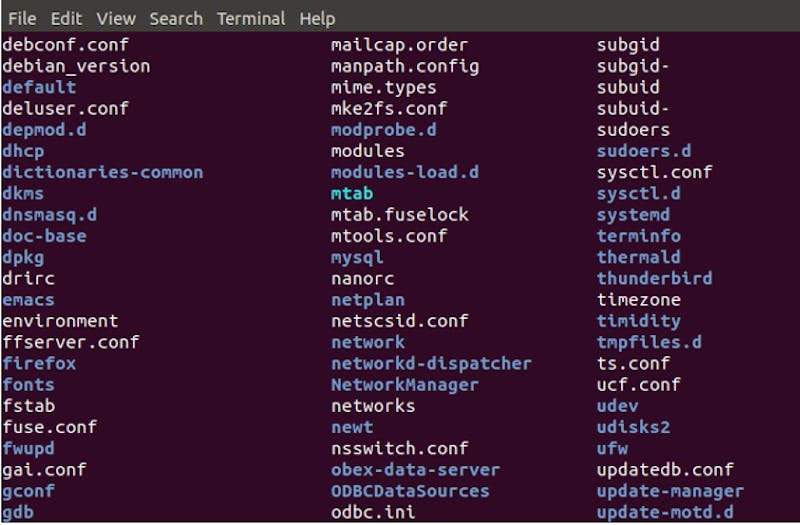
“cd Network Manager”, and if you ls you’ll find system-connections.
Go to that directory, type “ls”, and you’ll see your saved networks. From here just print the desired network with sudo cat “network name”, and your password should now be visible in the “PSK=” field.
To Sum Up:
CTRL+ALT+T
cd.. or cd Network Manager
ls
sudo cat “network name”
and your password is visible in the "PSK=" field.
Android: Can you show the WiFi password without root?
How to find WiFi password on Android without root access is a problem that many users face.
For Android, unfortunately, the options to get the password shown in clear text have thus far been out of reach for the casual user.
You would need to root your device, and then from there use a file explorer capable of going to your root folder, and find the wpa_supplicant.conf or wep_supplicant.conf file. The WEP file is unlikely in today’s modern networks, unless the router has been configured to use the now deprecated WEP.
Fortunately, that’s now changing thanks to the implementation of WiFi Easy Connect in the Android 10 (API level 29). With this, in the near future, apps should now be able to easily share WiFi passwords through Bluetooth, plain text, or a QR code.
To find out more visit: https://developer.android.com/guide/topics/connectivity/wifi-easy
How to find WiFi password on iPhone
If you are an iPhone user, the steps to see your WiFi password may vary by generation. I general, you should be able to view your password in Keychain as mentioned in this Apple discussion.
Referencing the example there, you can simply: navigate to /Applications/Utilities/Keychain Access, search for the SSID of the network, select Get Info, click the Attributes tab, and select Show Password.
Extra Credit: How to see WiFi passwords with Wifite (advanced)
If for whatever reason you’ve lost the password to a WiFi network you fully legally own, and in no way can be held liable for accessing or cracking, there is still hope. If you have access to Kali Linux, and a WiFi card capable of going into monitor mode, you can use Wifite to try and crack the password, especially if it’s a simple password. Your mileage will vary for more complex passwords, depending on both available wordlists, computer processing power, and how much time you’re willing to spend.
As expected of a Linux install, you open up a terminal, and type ifconfig or iwconfig to find out the name of your WiFi interface. In the below screenshot we’ve used iwconfig, and we can see our WiFi is “wlan0”. An added benefit to this command is knowing if the card is in managed or monitor mode.
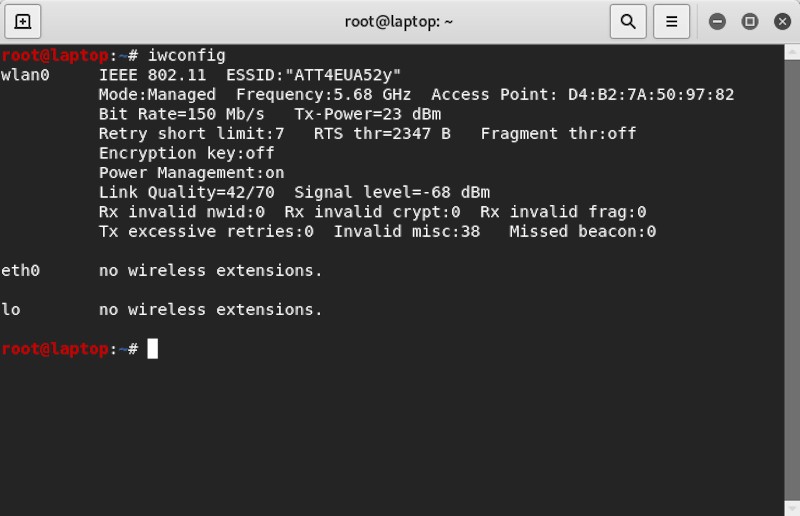
Now you can go get a snack or check on your plants, while the attack carries out. Even if you fail, you can refer to a saved file of the captured handshakes for an offline dictionary attack later. Don’t forget to return to managed mode to regain internet access with “airmon-ng stop wlan0mon”. Check you’re back with “iwconfig”.
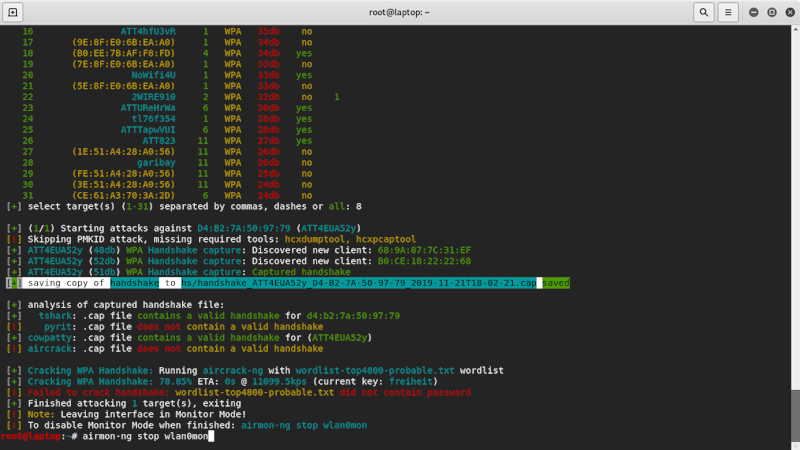
Pro Tip
Don’t be afraid of using --help, man pages, or -?.
Final Thoughts
We hope you found these tips on how to know WiFi passwords helpful. The means to retrieve your WiFi password can vary depending on the system you use. If you control your own WiFi router, that makes things easier. If not, hopefully one of the tips here helped.
